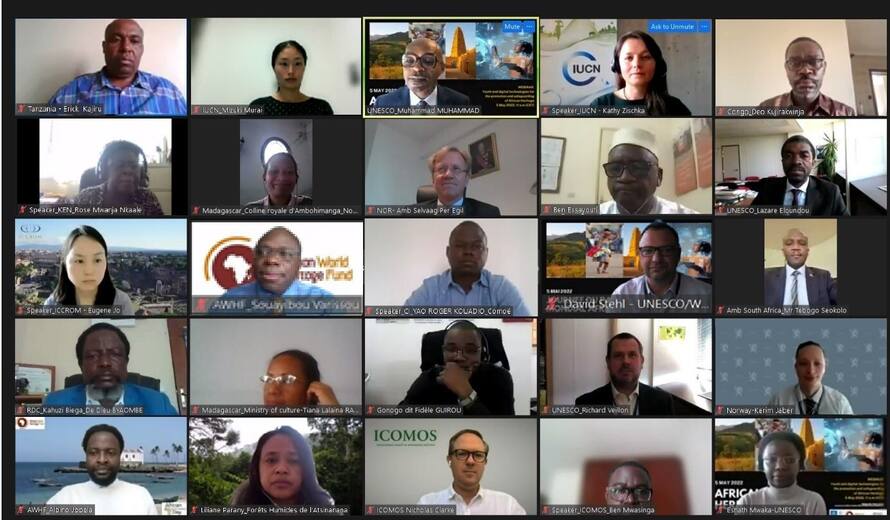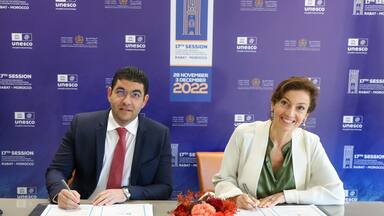UNESCO launches its Strategy to remove African properties from the List of World Heritage in Danger
On 9 May 2022, UNESCO organized an online meeting to discuss the removal of African properties from the List of World Heritage in Danger.
Despite the richness and diversity of Africa’s cultural and natural heritage, the Sub-Saharan African region is one of the least represented regions on the World Heritage List, but still registers the highest number of endangered properties.
The meeting was the occasion to present the strategy for developing the Desired State of Conservation for the Removal of a Property from the List of World Heritage in Danger (DSOCR) in the Africa region (2021-2025), developed by UNESCO together with the Advisory bodies (ICCROM, ICOMOS, IUCN) and the African World Heritage Fund. The strategy is aligned with the Flagship Programme 3 of UNESCO's Priority Africa. More than 90 participants from the 11 States parties concerned (Central Africa Republic, Democratic Republic of Congo, Côte d’Ivoire, Guinea, Kenya, Madagascar, Mali, Niger, Senegal, Uganda, and the Republic of Tanzania) participated including site managers, as well as representatives from ICOMOS, ICCROM and IUCN. Mr Tebogo Seokolo, Ambassador of South Africa, Mr Per Egil Selvaag, Ambassador of Norway, and Mr Souayibou Varissou, Executive Director of the African World Heritage Fund (AWHF) all took the floor with opening remarks for the occasion.
This was also a good opportunity for the main actors in Africa to exchange with UNESCO and the Advisory Bodies on the process of developing a DSOCR and the associated corrective measures, good practices and experiences already gained in previous removals of properties from the List in Danger were shared, notably the example of Comoé National Park in Côte d'Ivoire, which was removed from the List in Danger in 2017.
With a five-step roadmap setting specific targets and timelines, the Strategy offers a comprehensive framework to develop the DSOCR of the Danger-Listed sites, along with the corrective measures and the timeframe for their implementation.
“The strength of this draft strategy is that it takes into consideration the situations that pertain to each of every site,”
While the strategy gives a clear projection for the processes that will take the endangered sites out of harm’s way, the participants agreed that a strong political will is needed to that end, as echoed by Mr Tebogo Seokolo who recalled that “the primary responsibility to take care and preserve the sites rest with the State Party.”
In addition, Mr Per Egil Selvaag declared that “the International Community must join efforts to address the threats to World Heritage sites complementing the duties and targeted actions by the States Parties concerned. He added that “Political commitment, institutional capacity and solidarity are needed to fully implement the World Heritage Convention and to make a good use of the toolbox available.”
“The success of this strategy will mainly depend on the dynamic between the States Parties concerned and partners involved. To ensure its implementation, this strategy will consist of organising capacity-building activities for the actors in the States Parties concerned to develop a Desired State of Conservation and carry out the necessary corrective measures,”
The implementation of the DSOCR strategy and adoption of the five-step roadmap will benefit from the generous support of the government of Norway.



